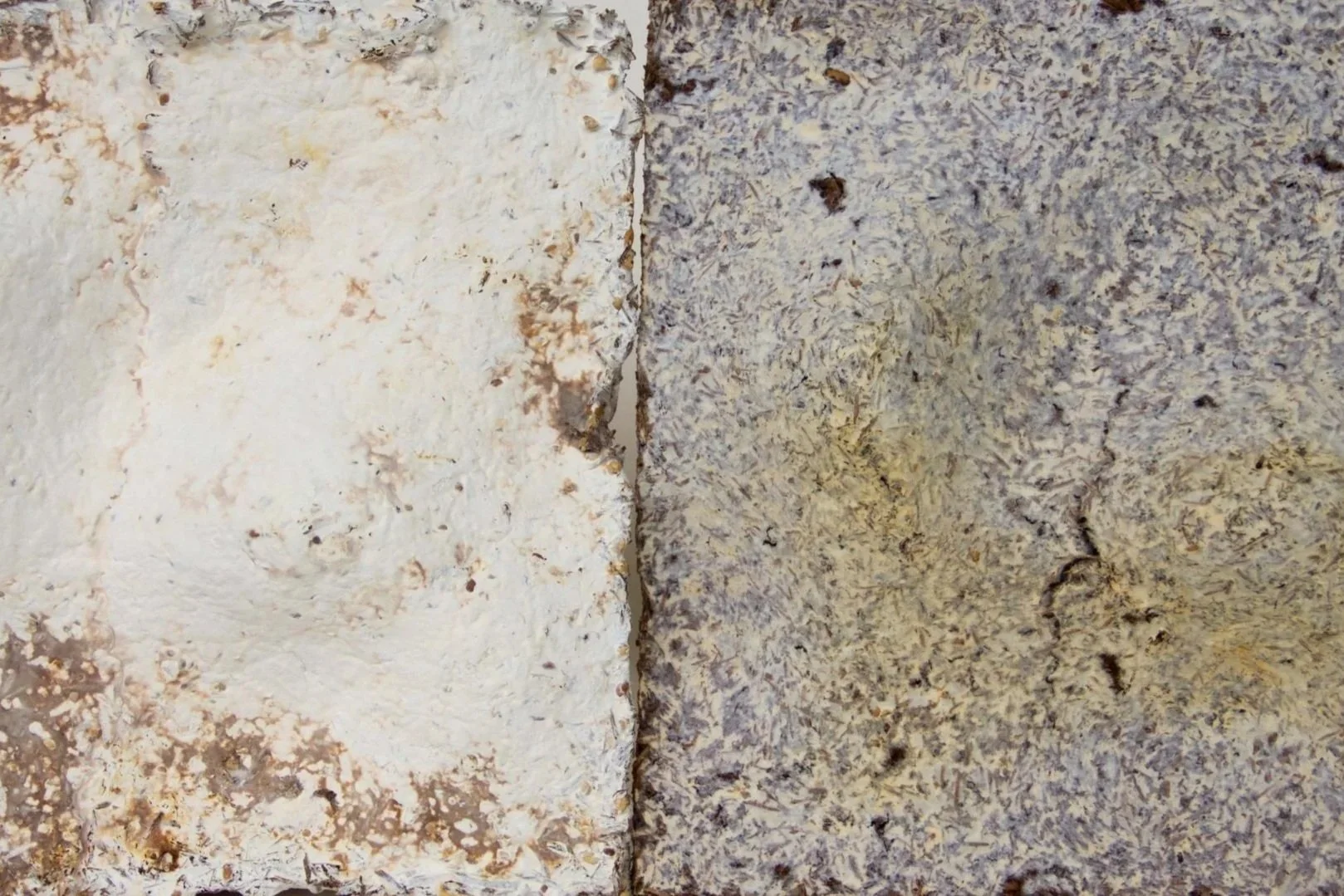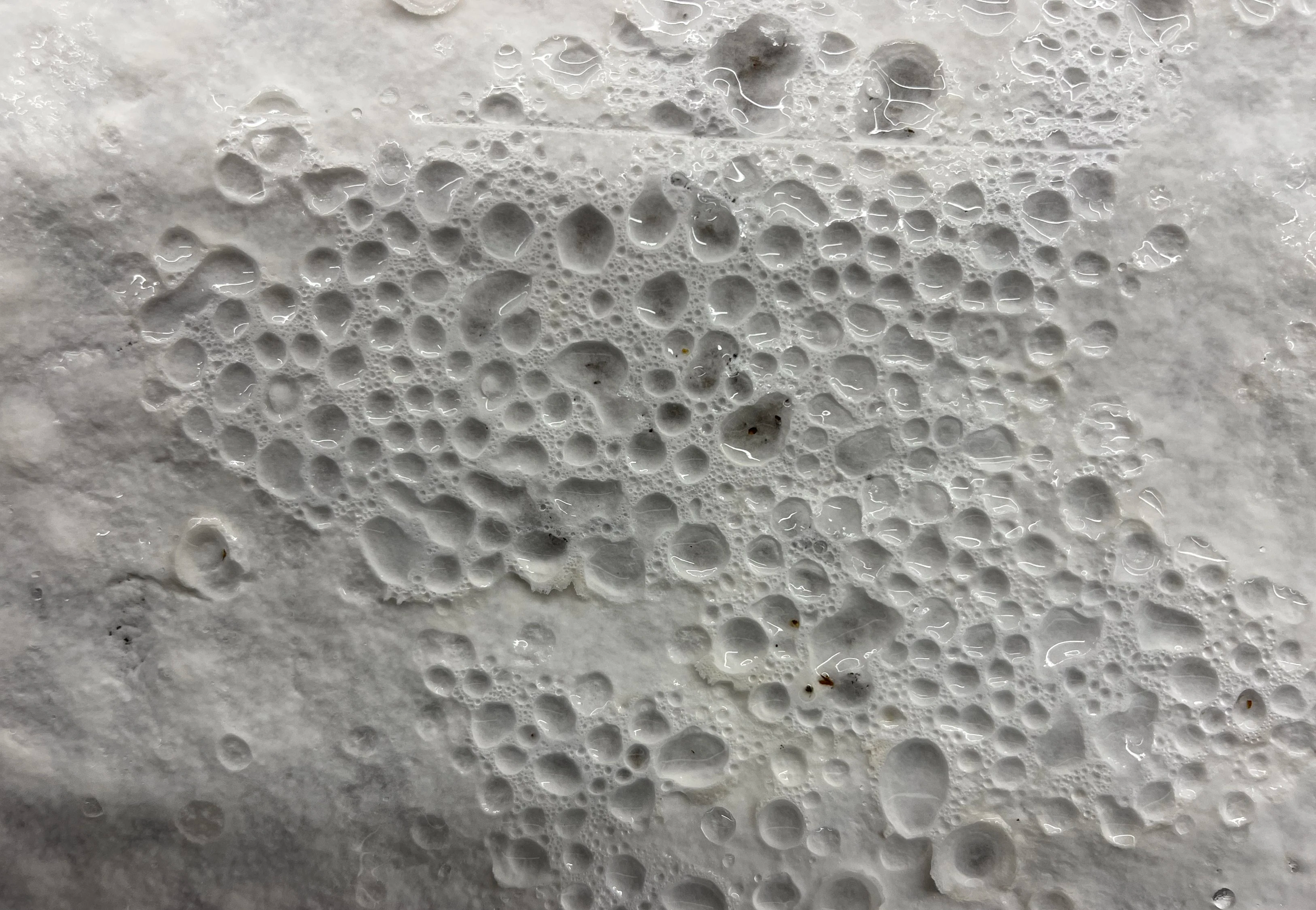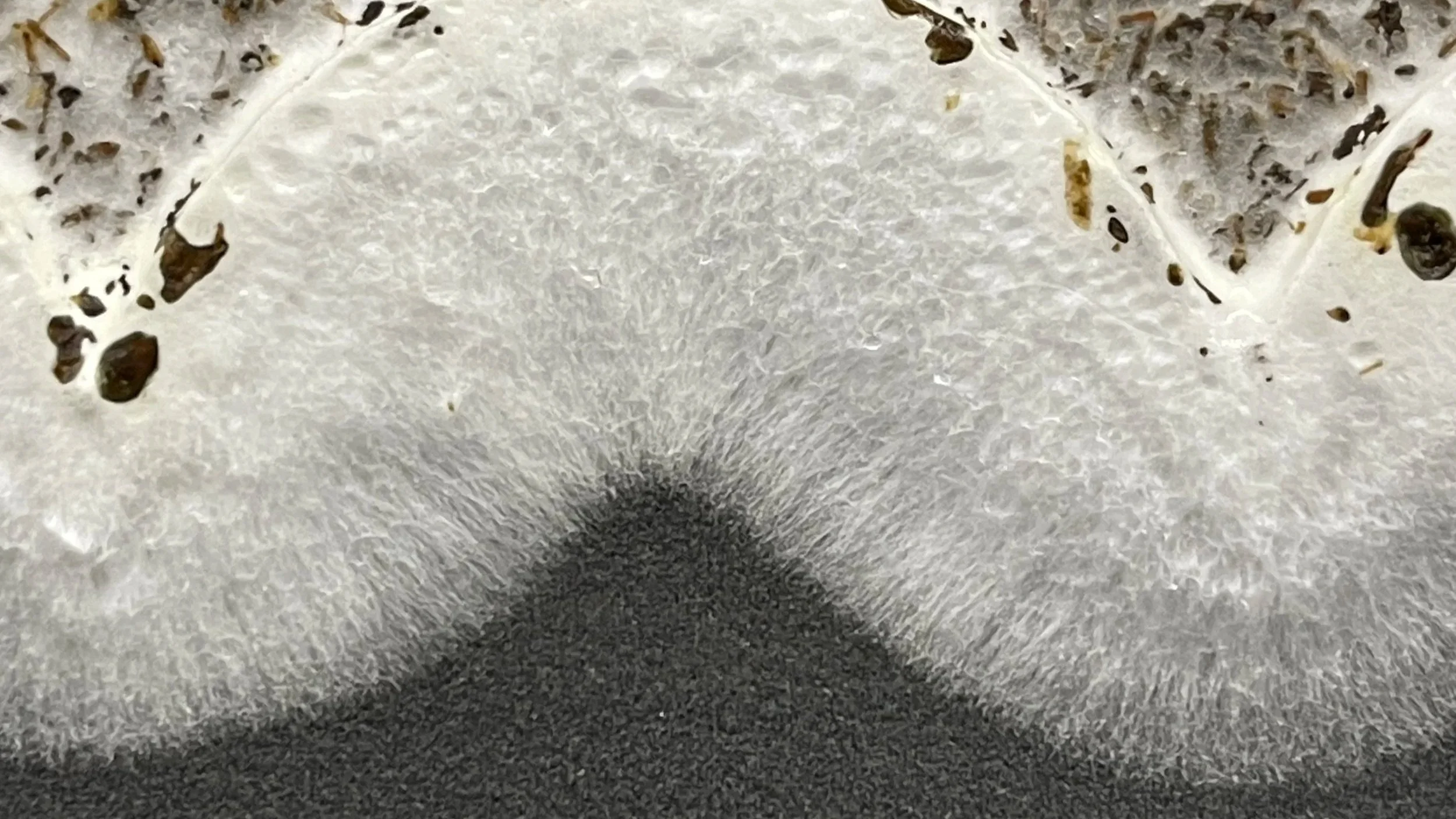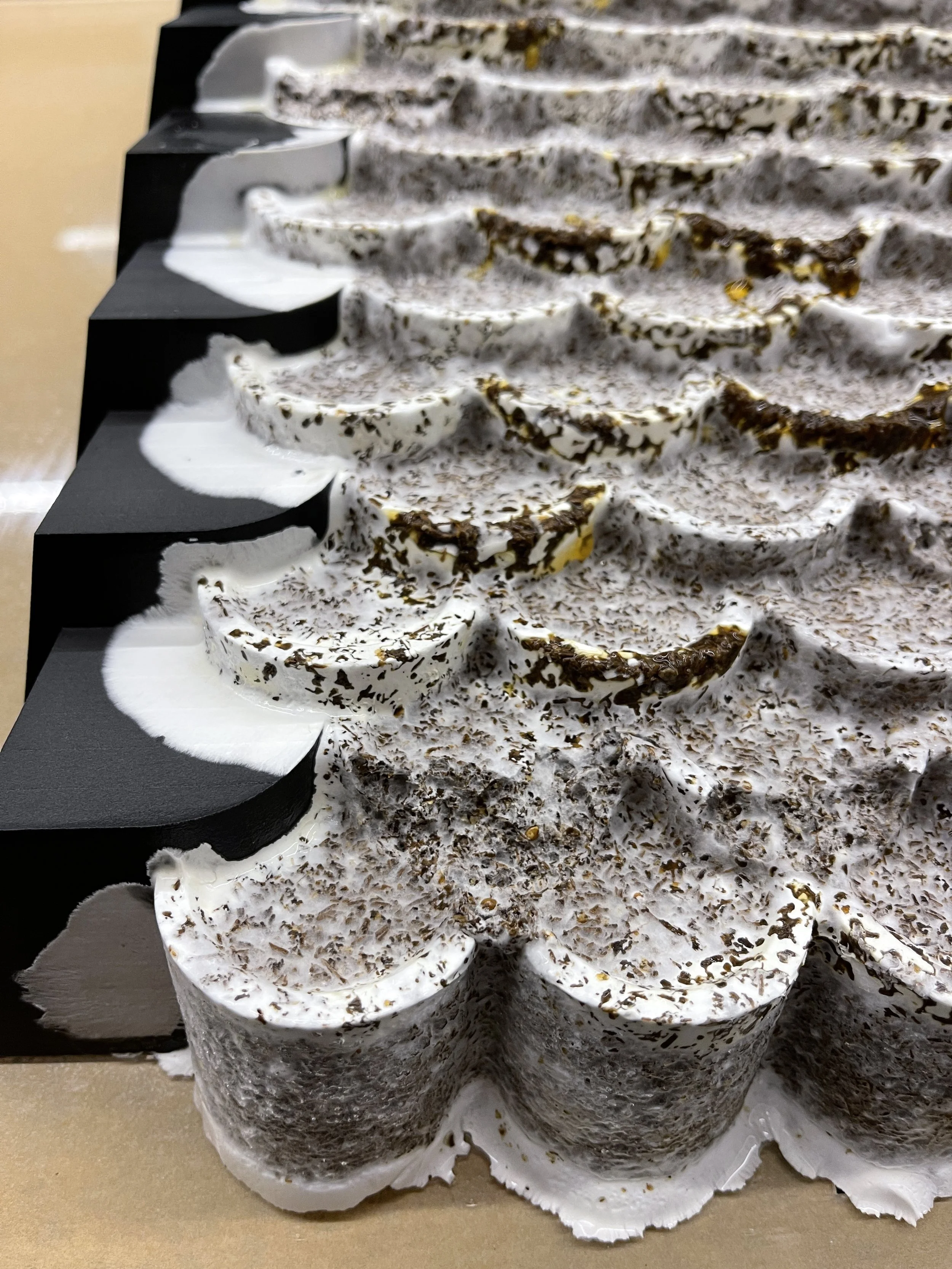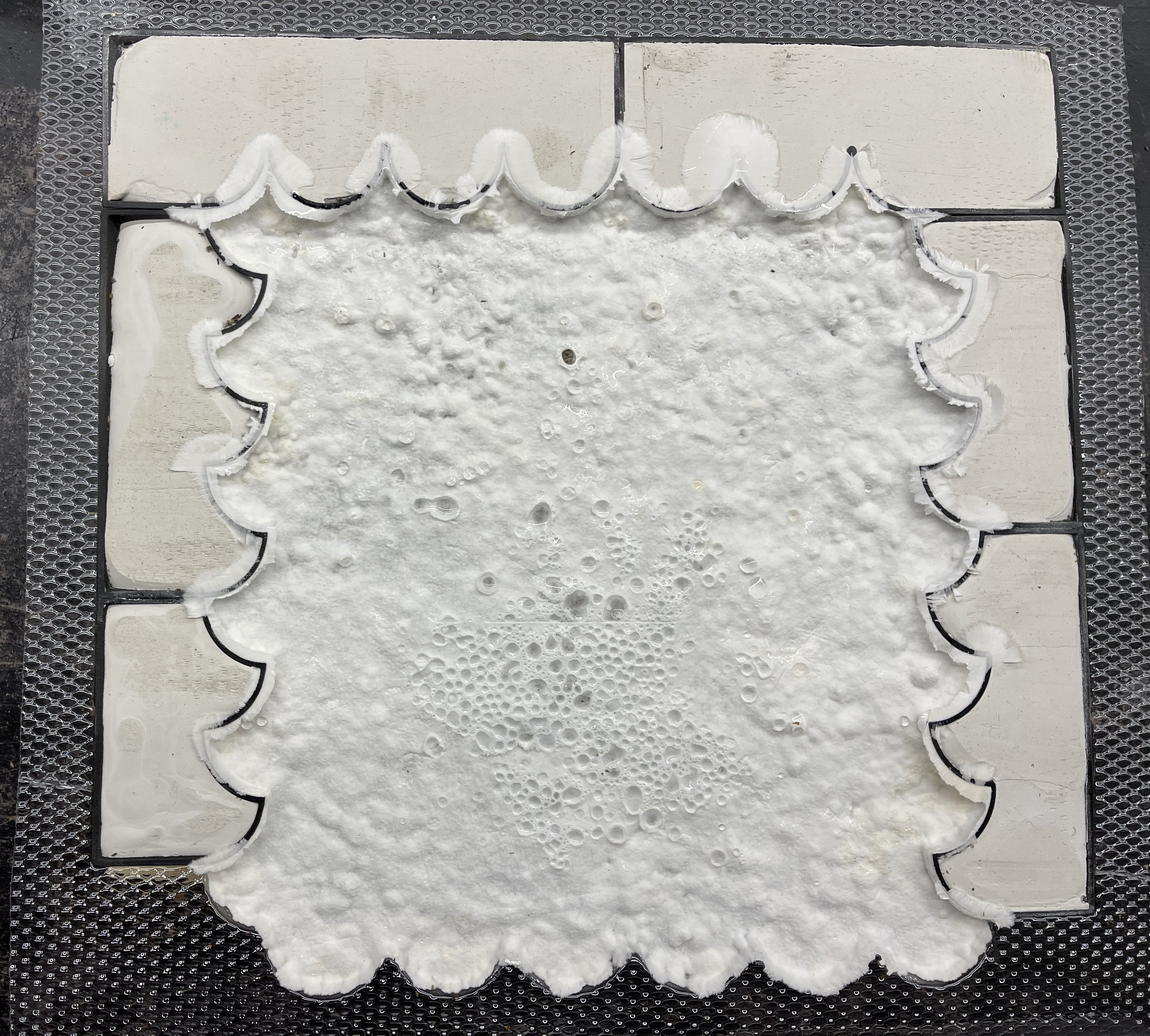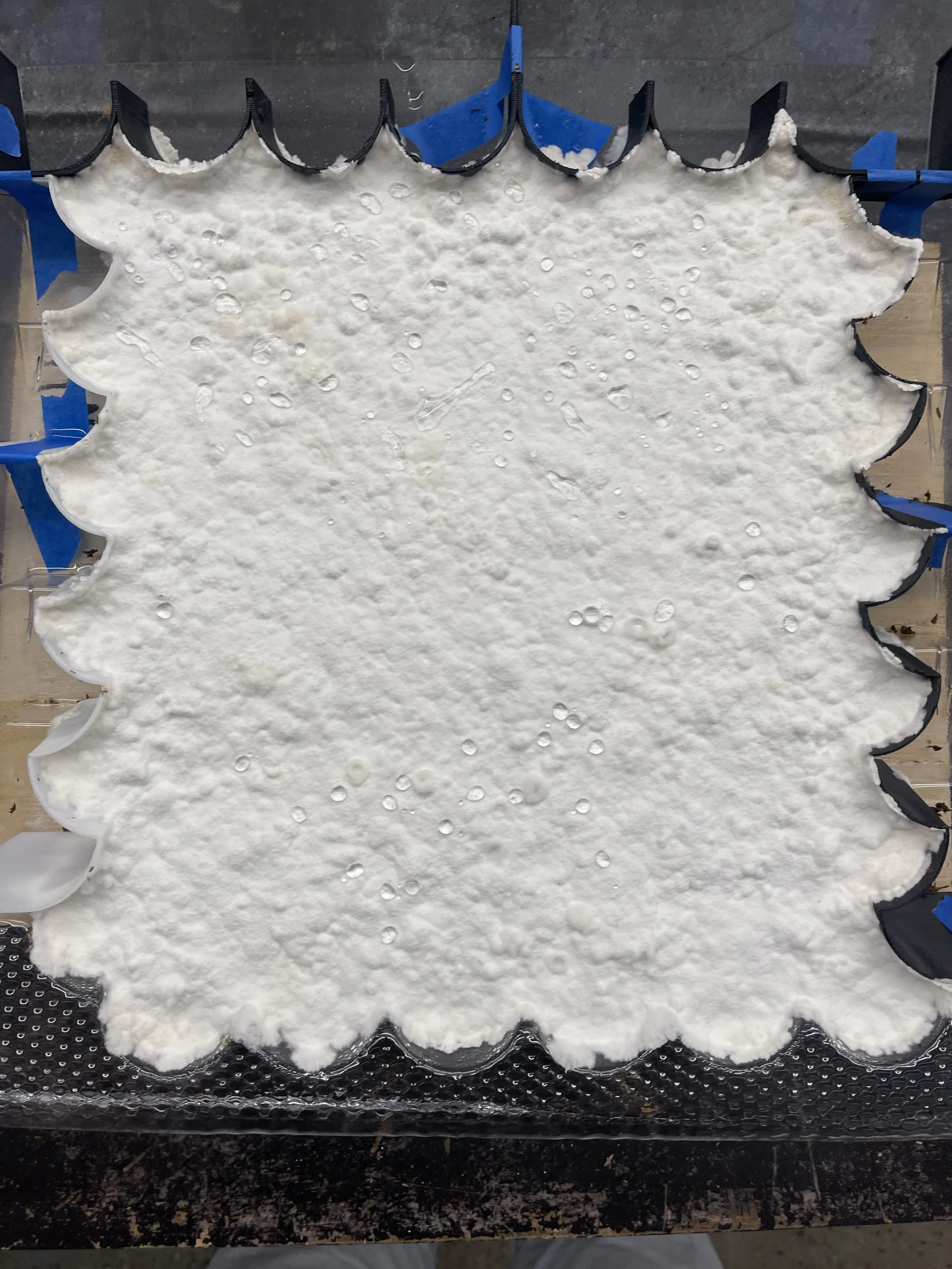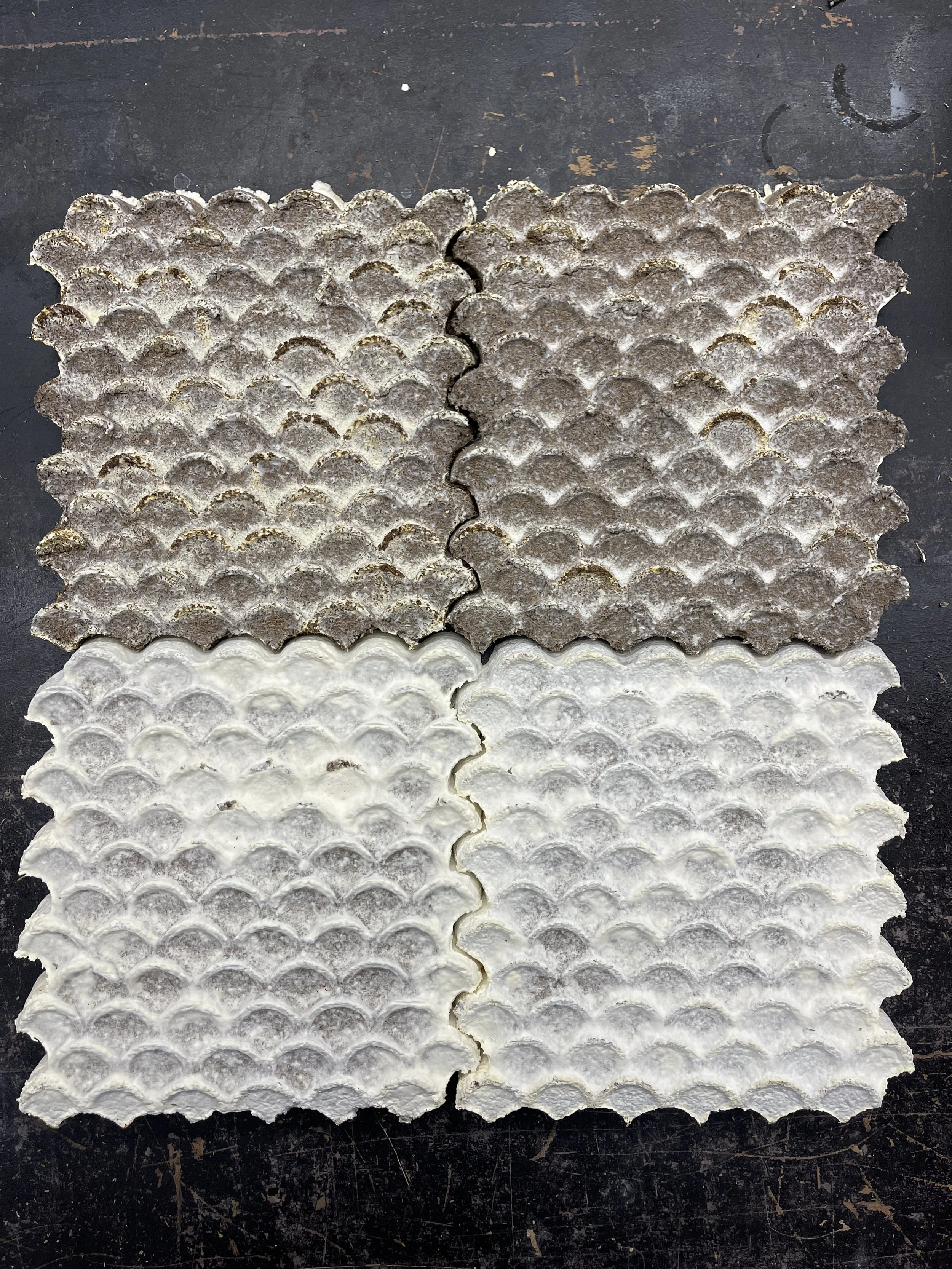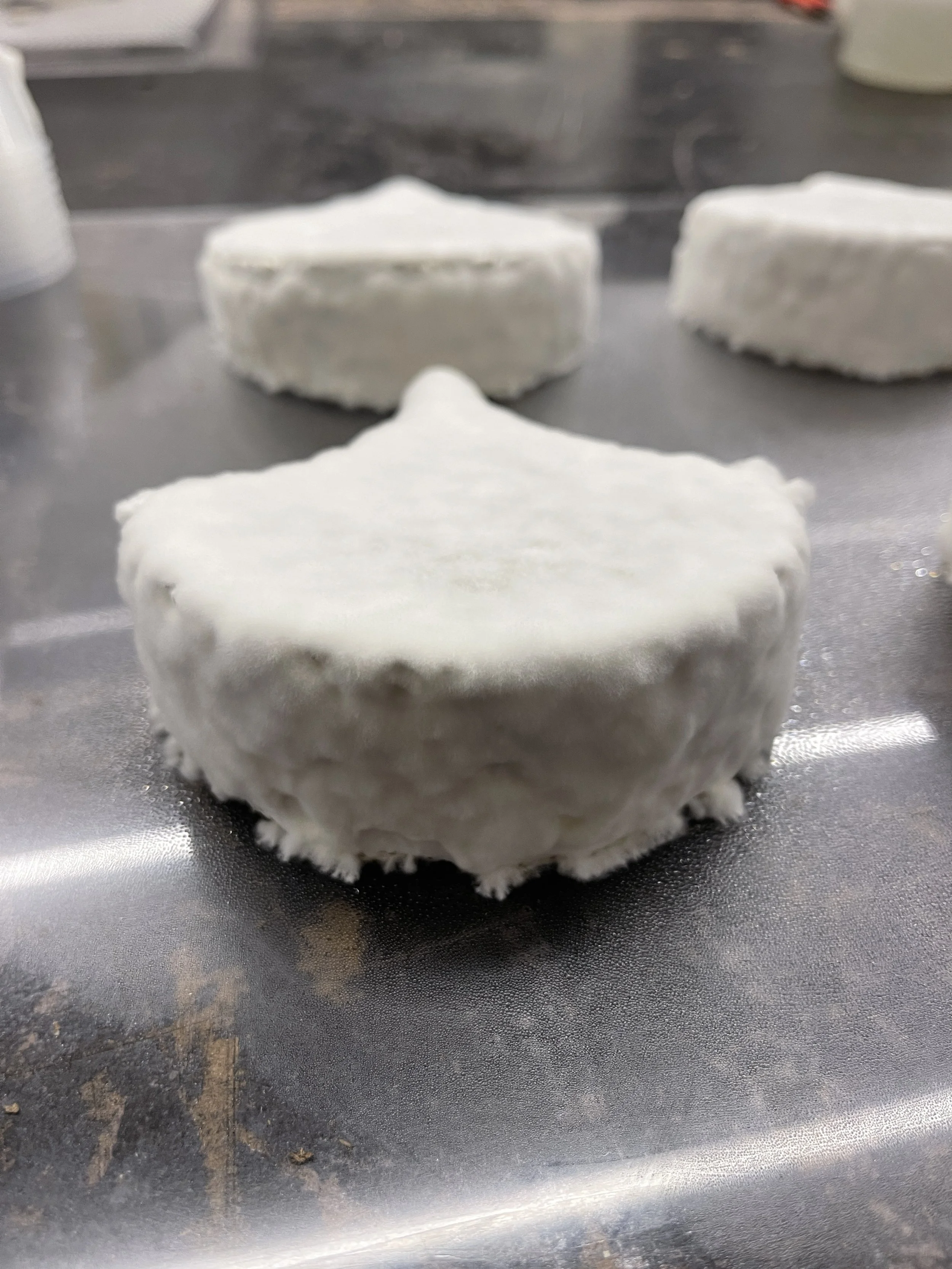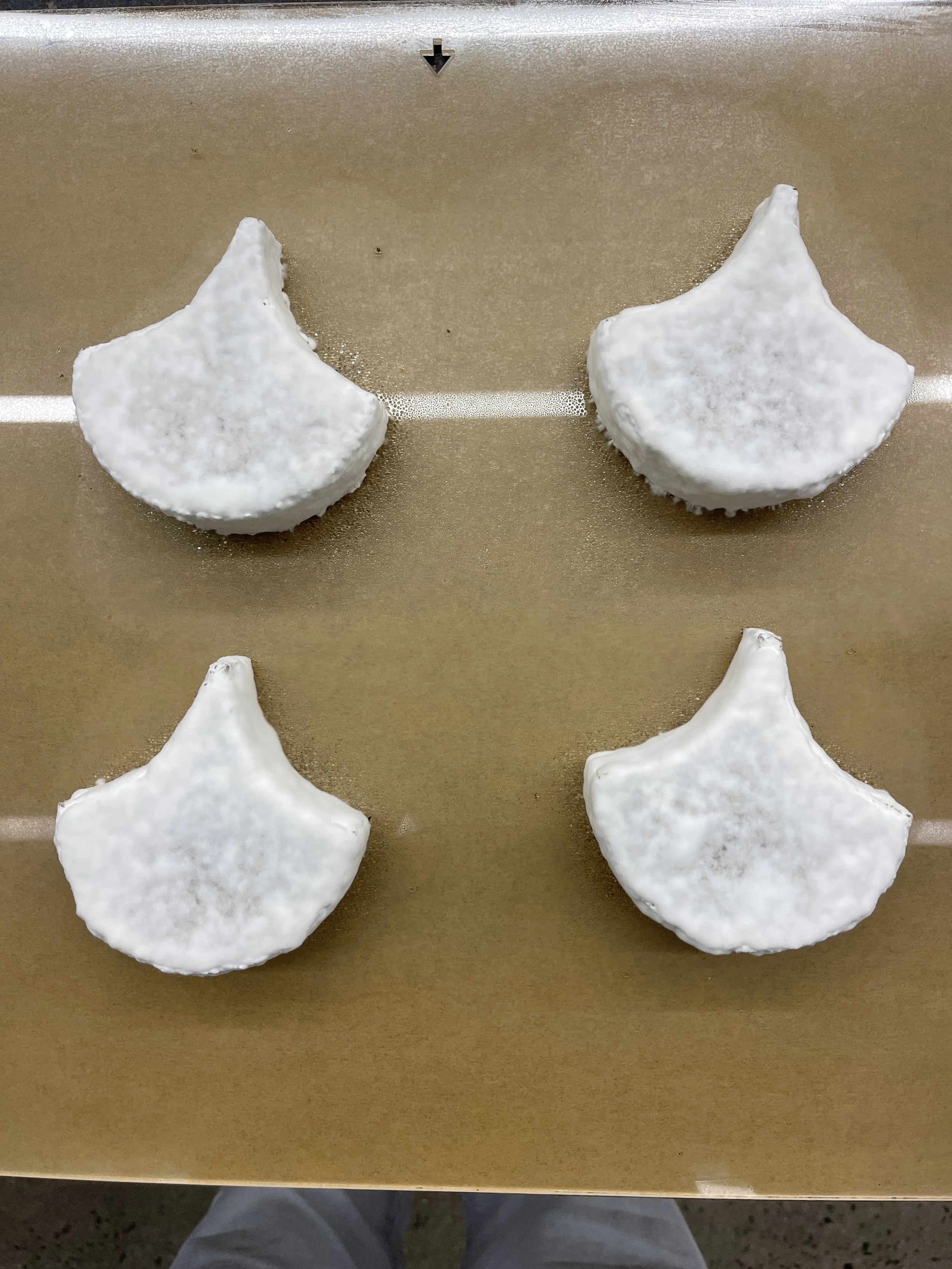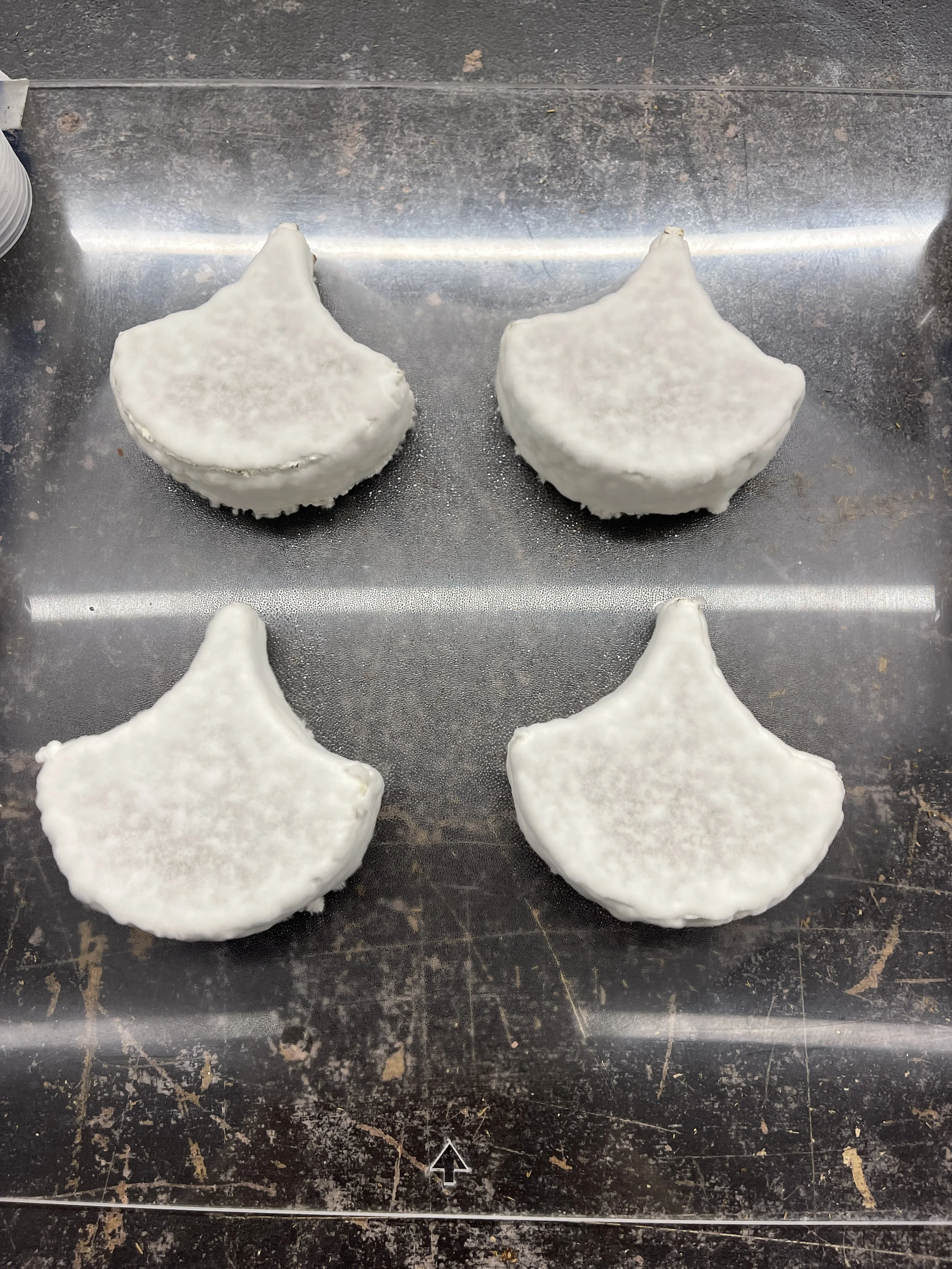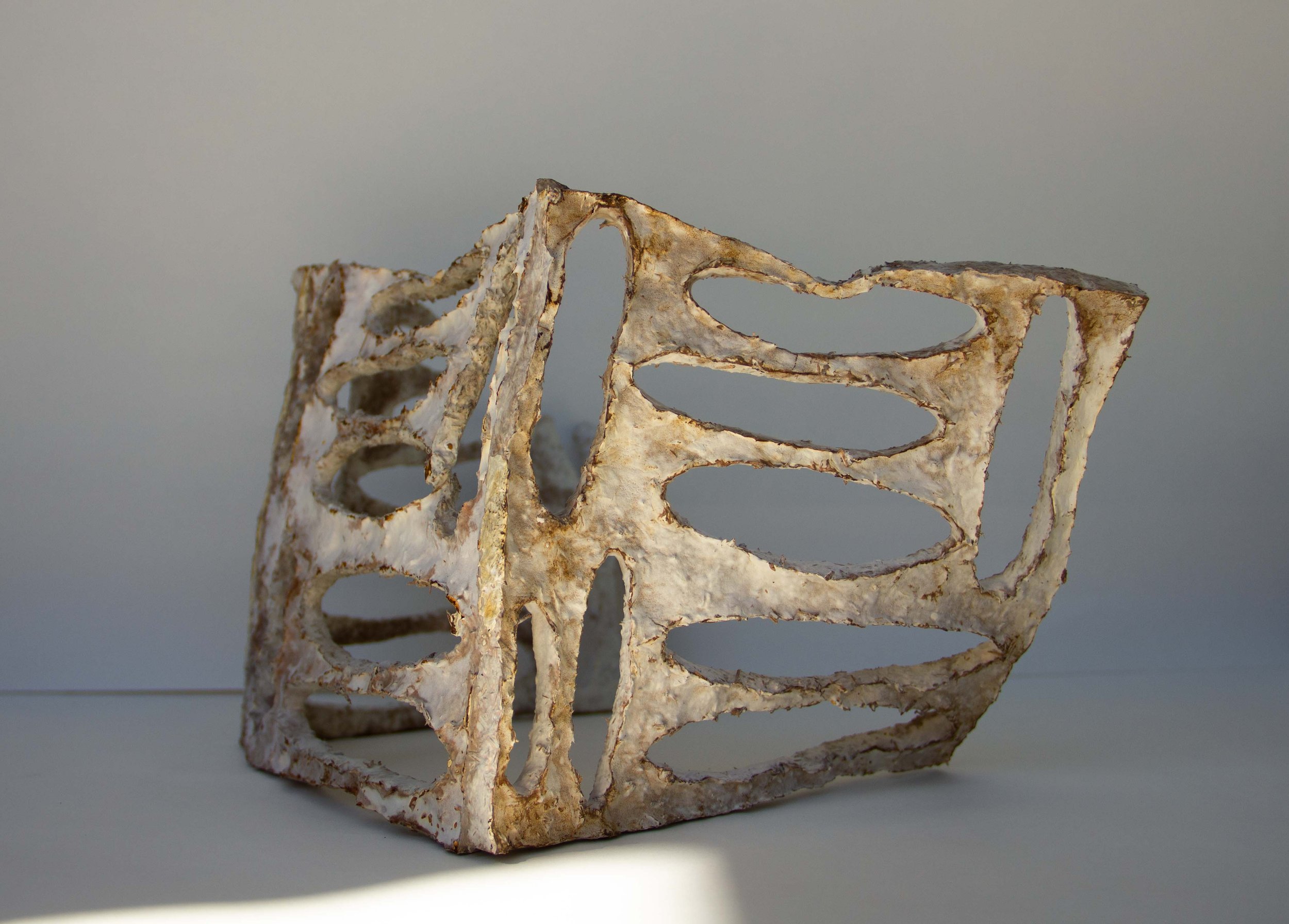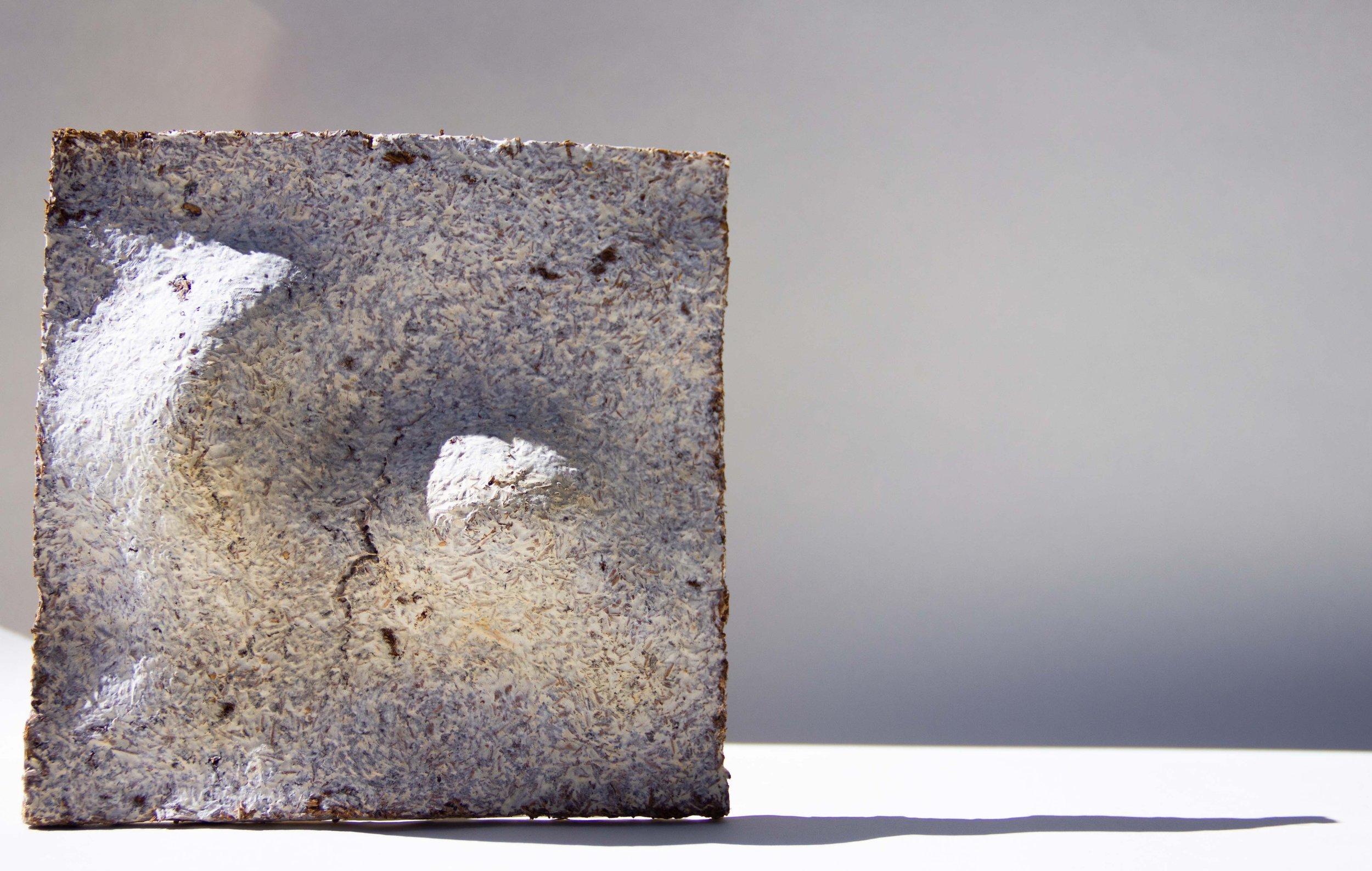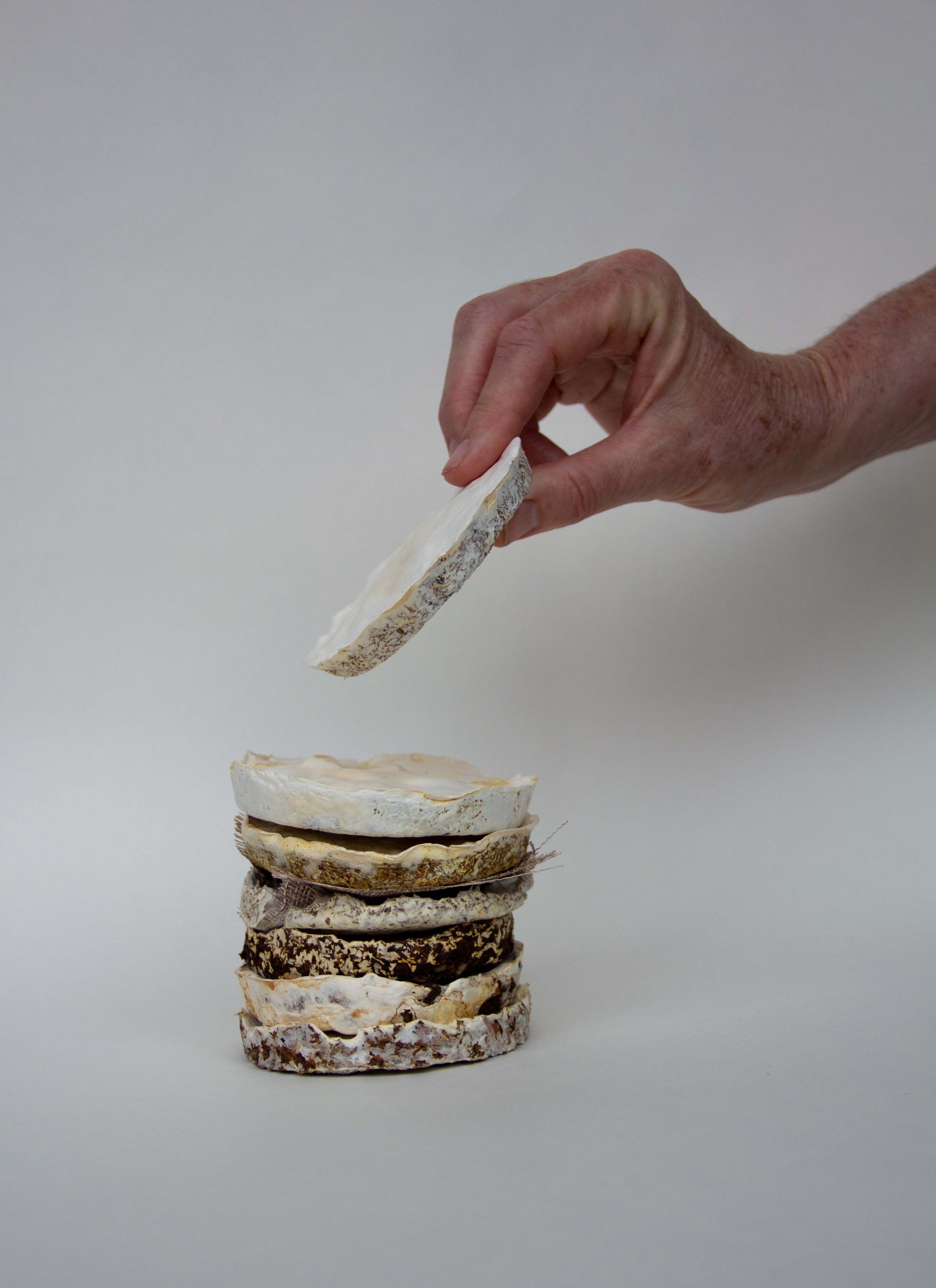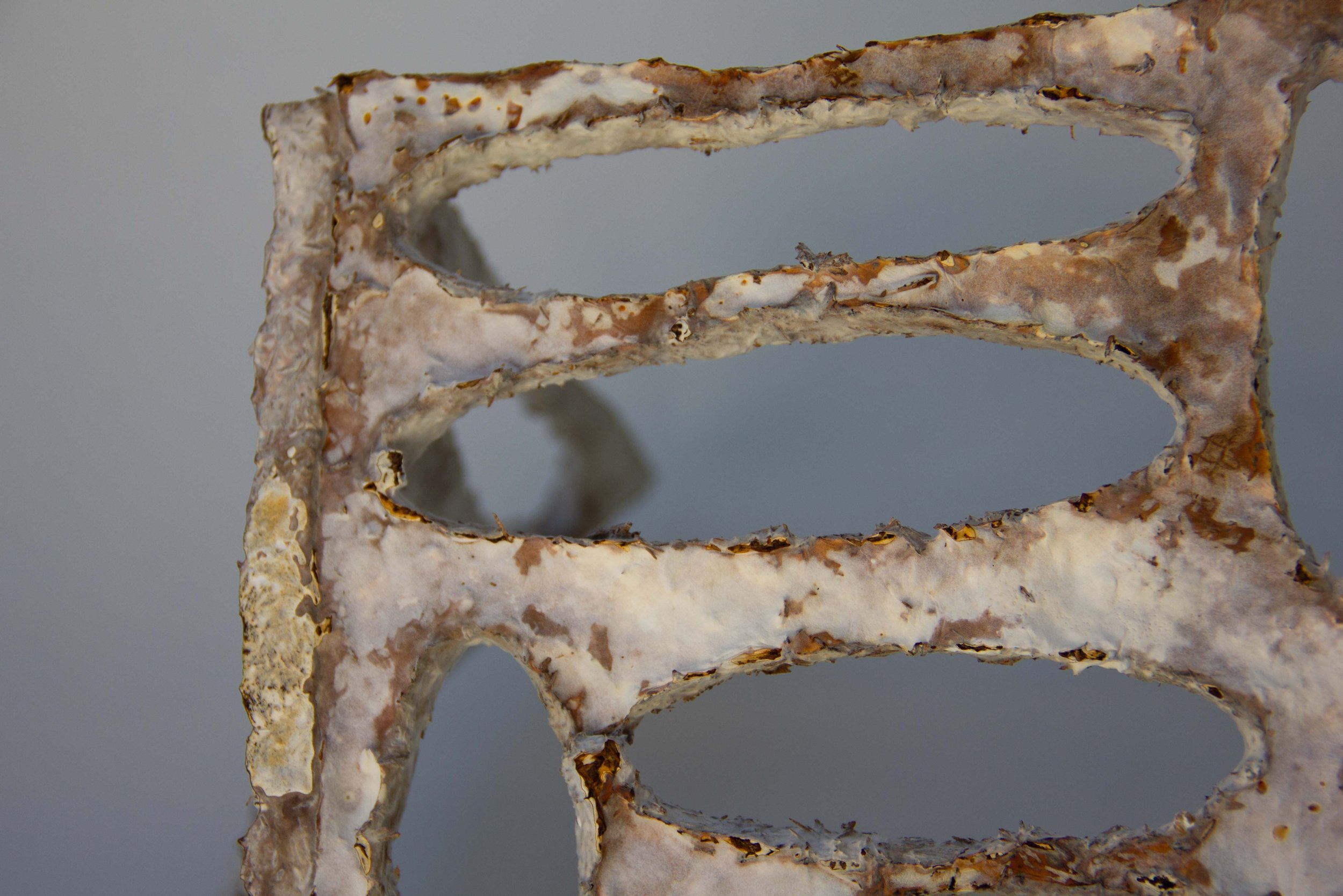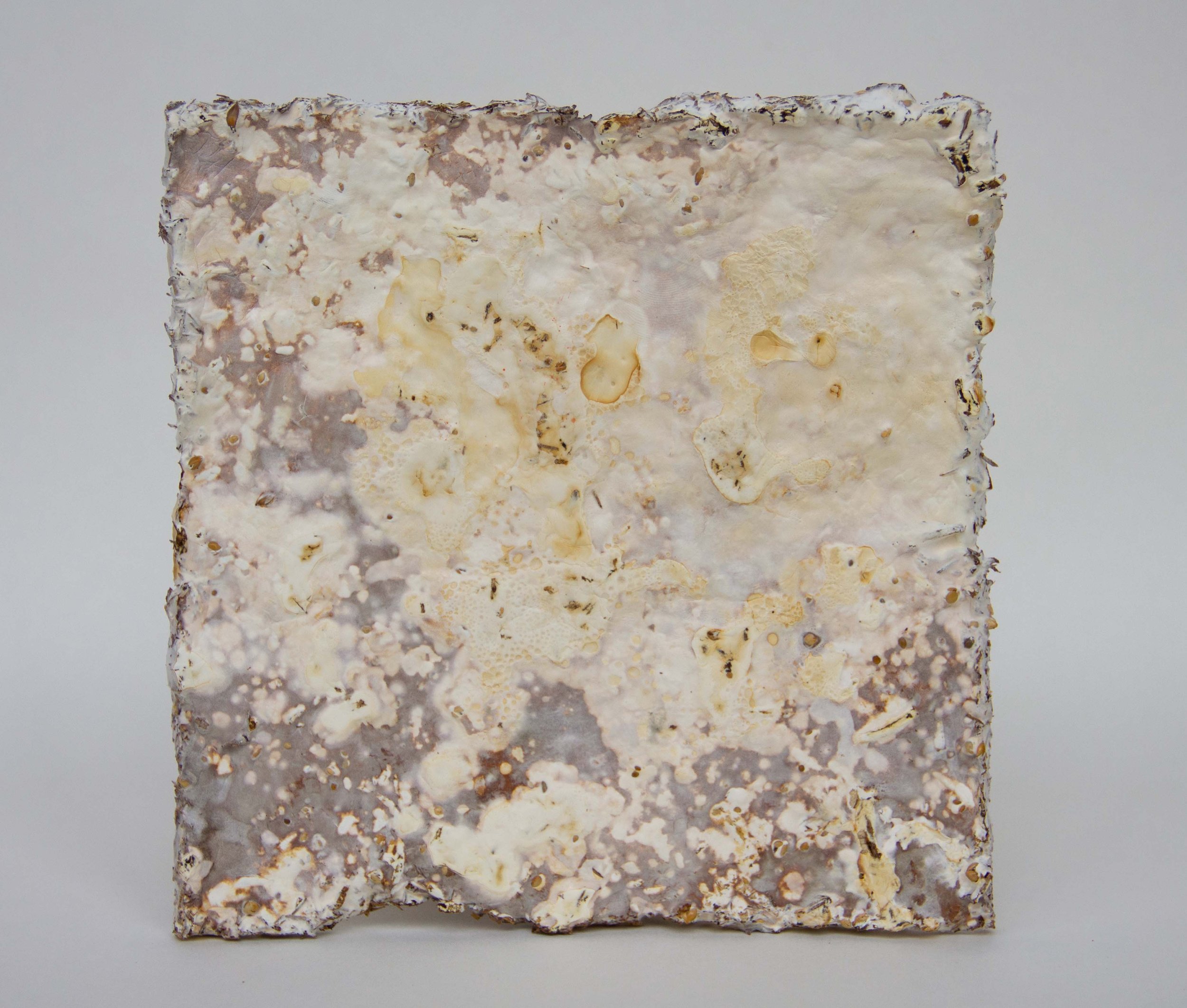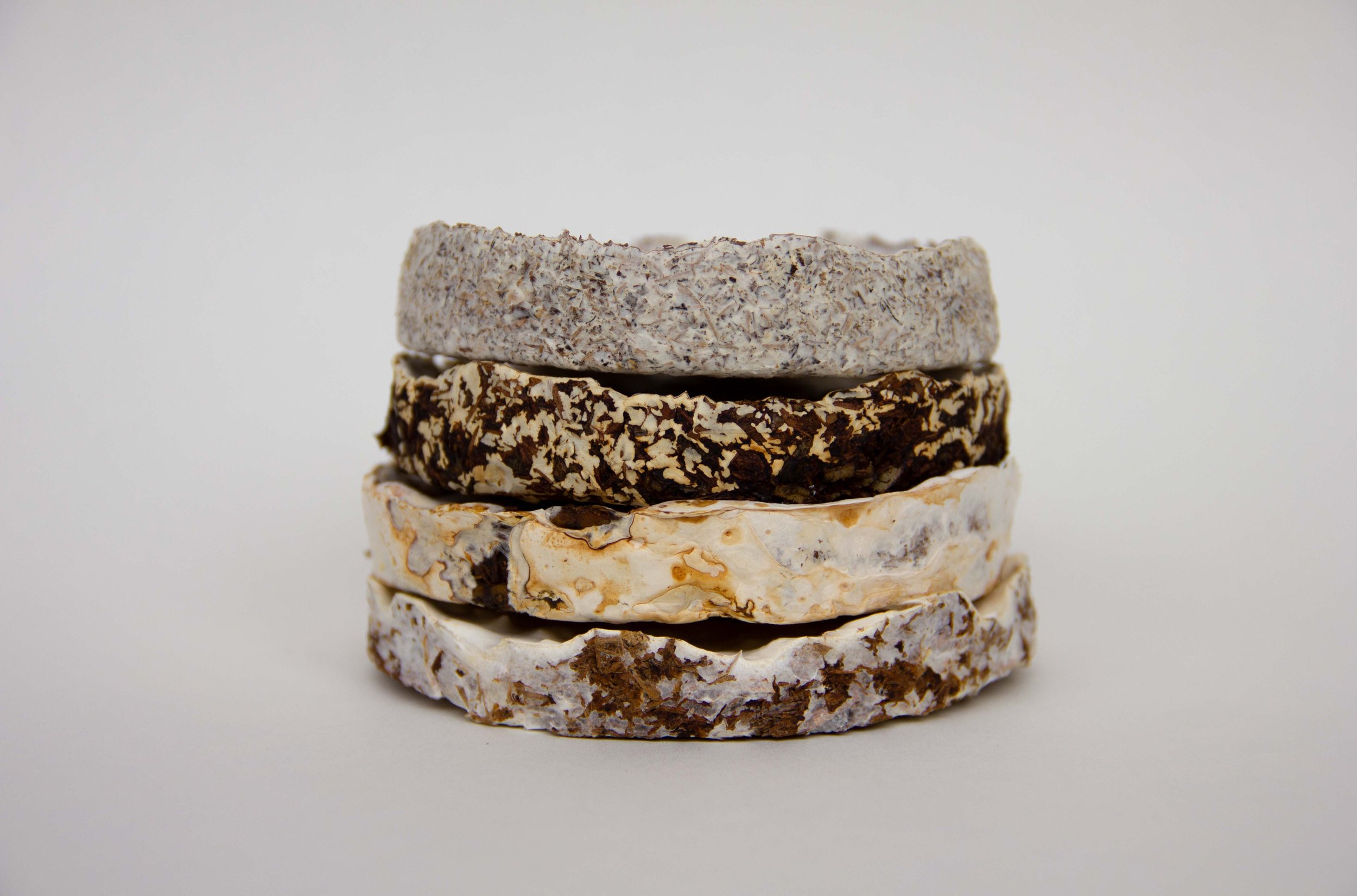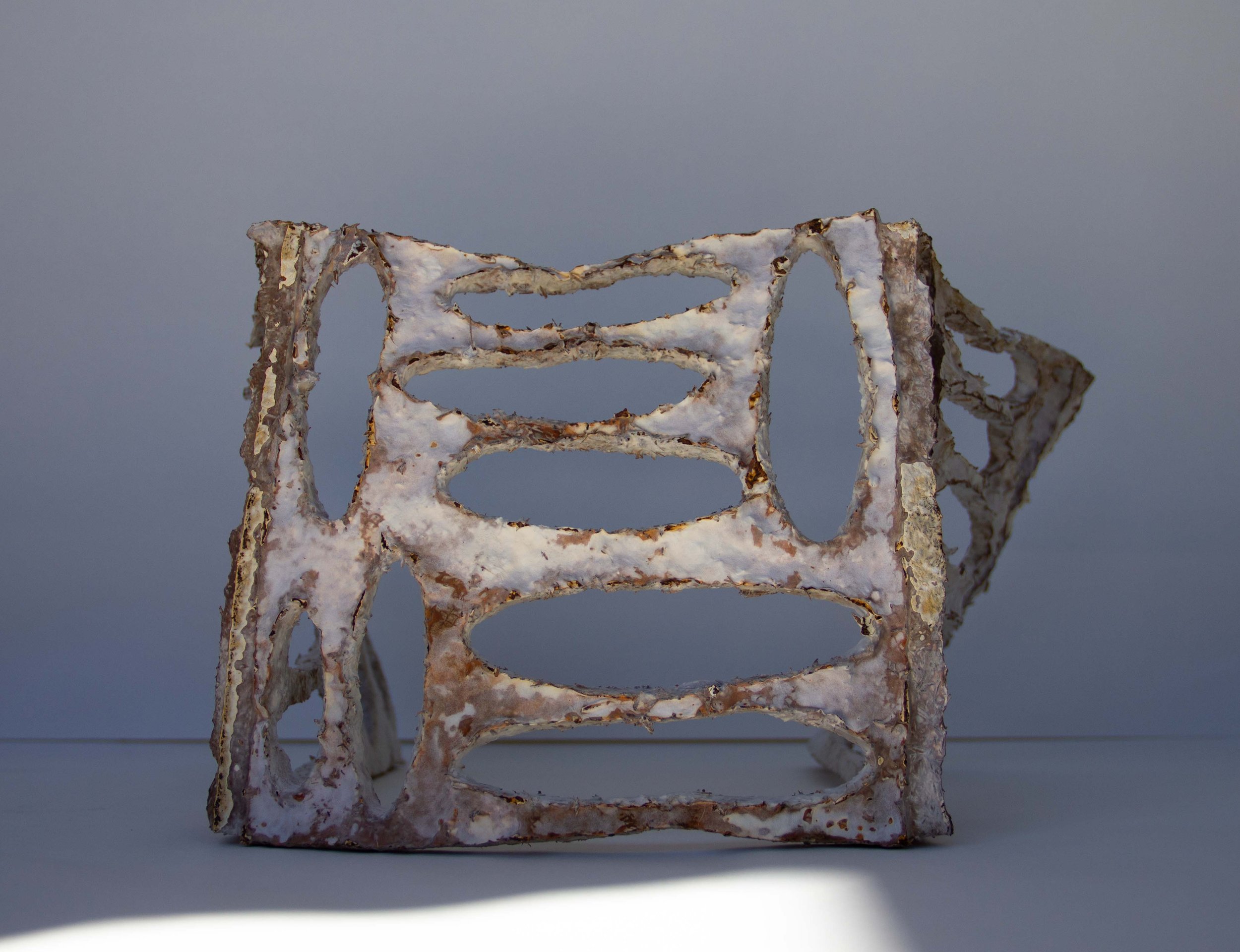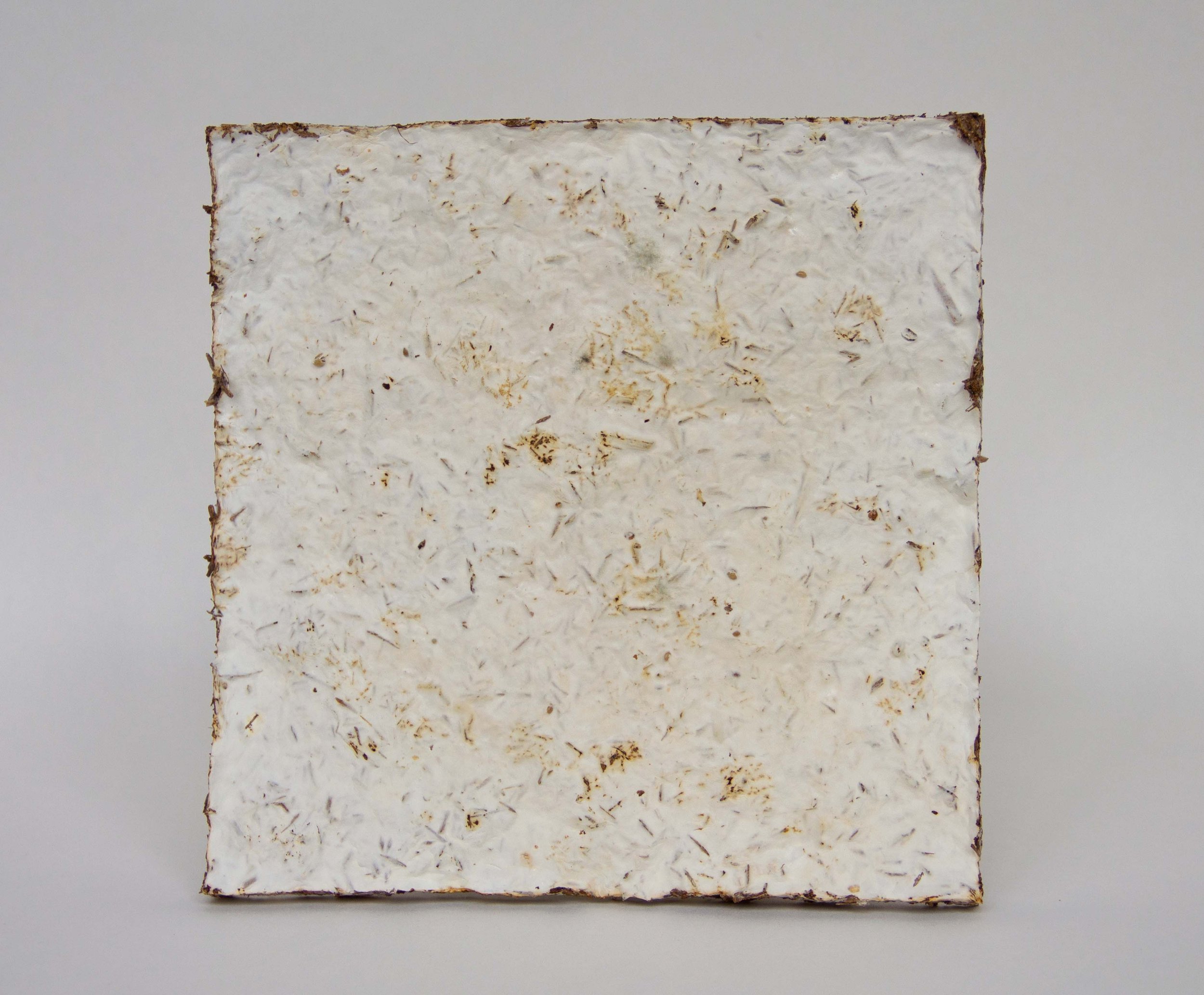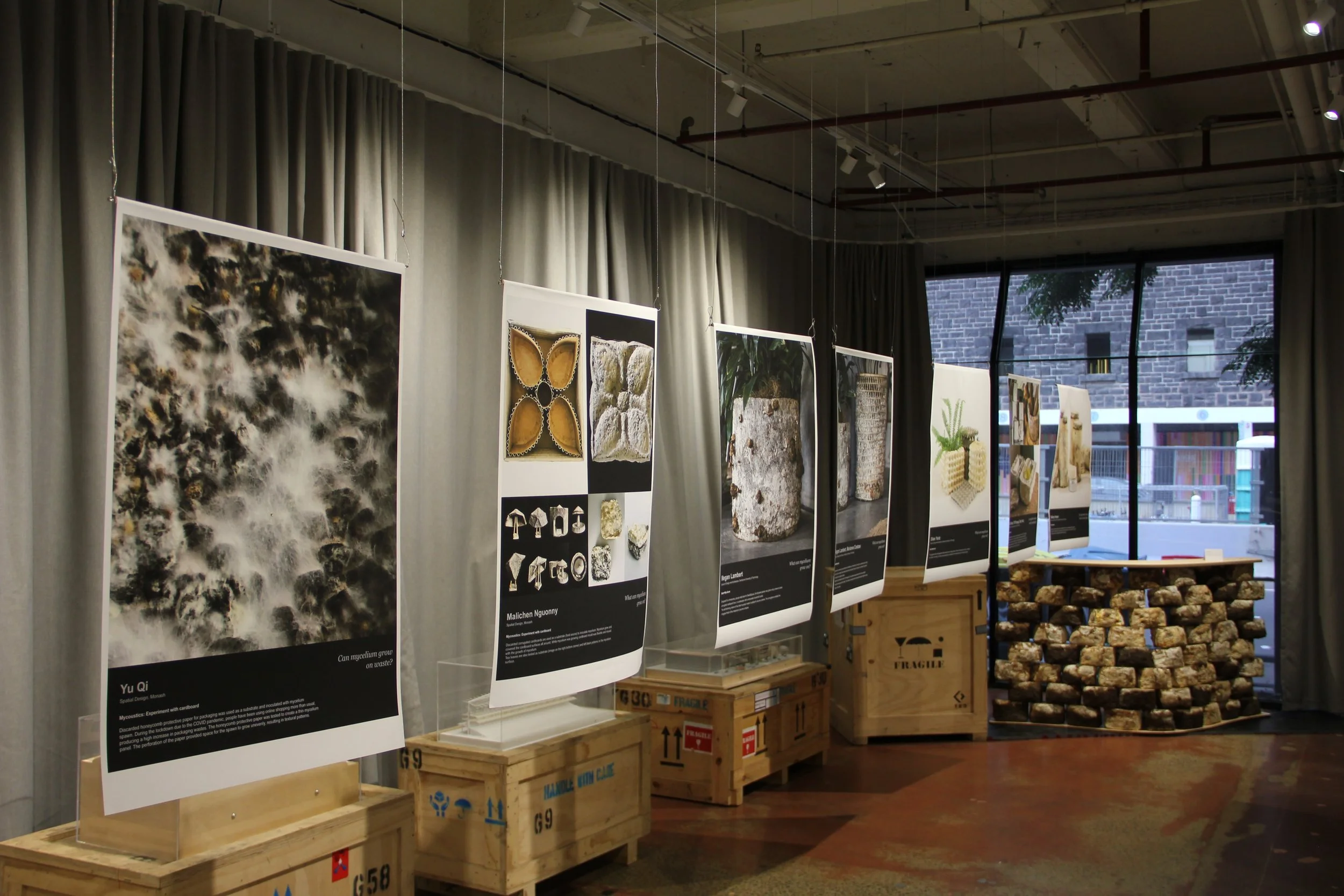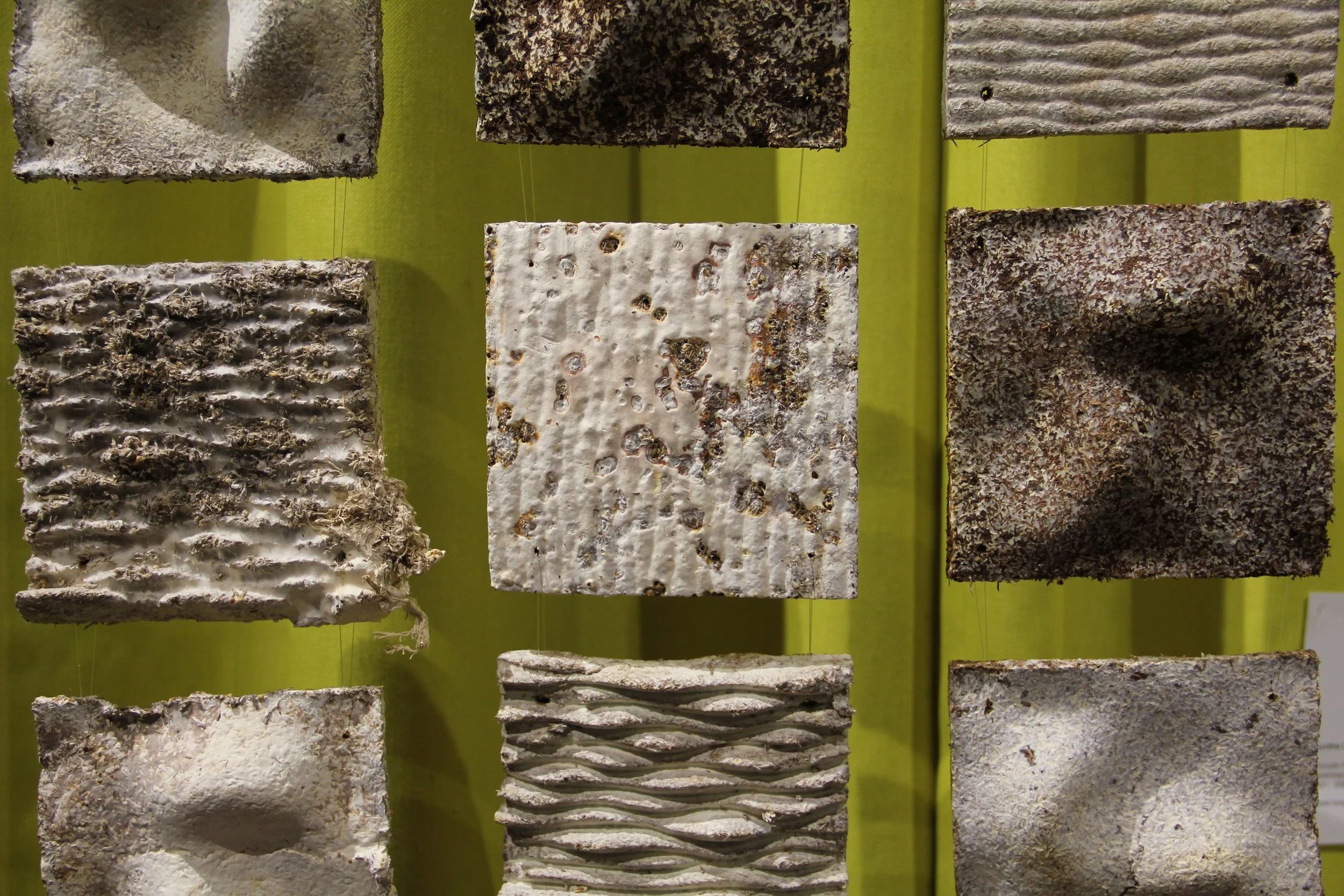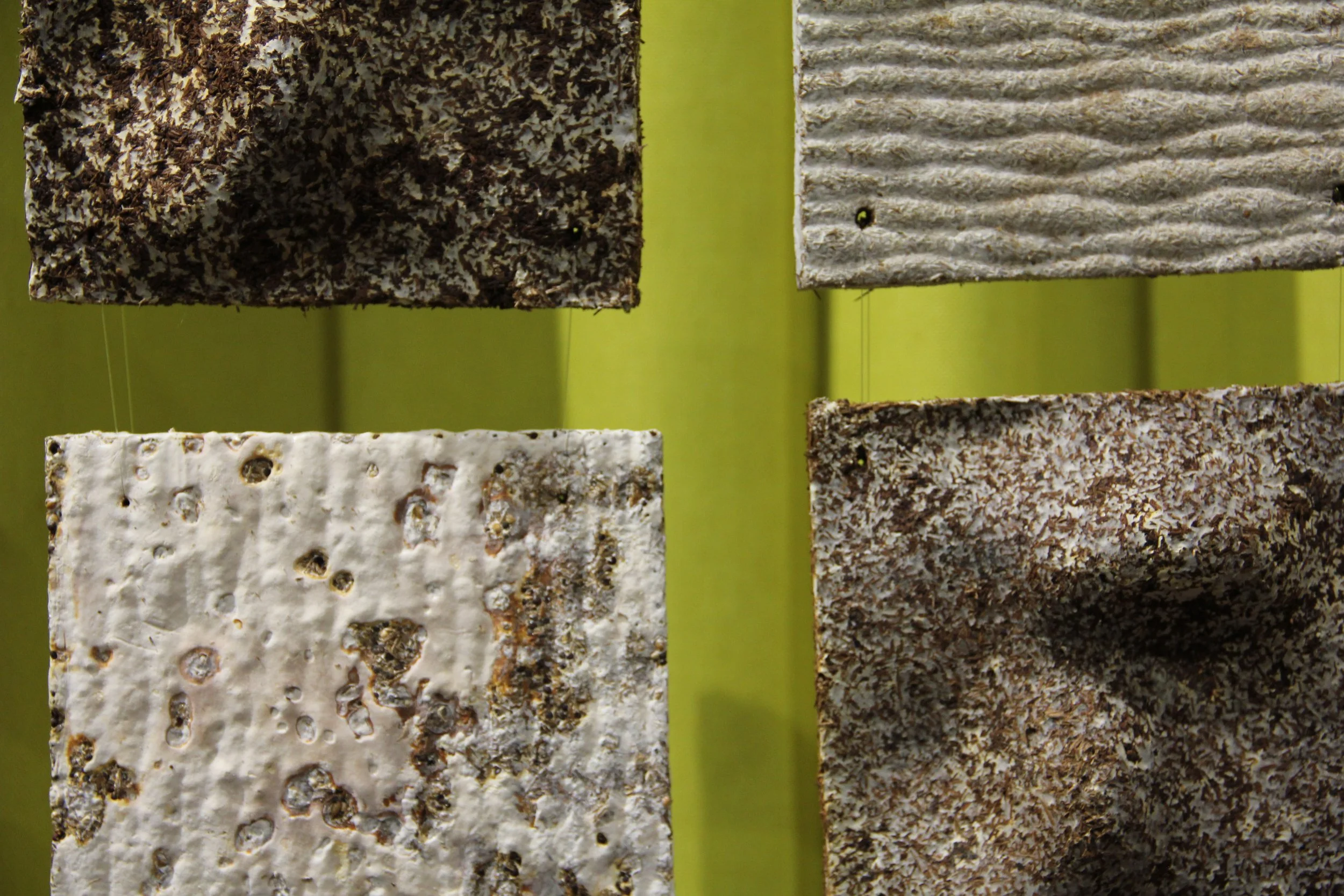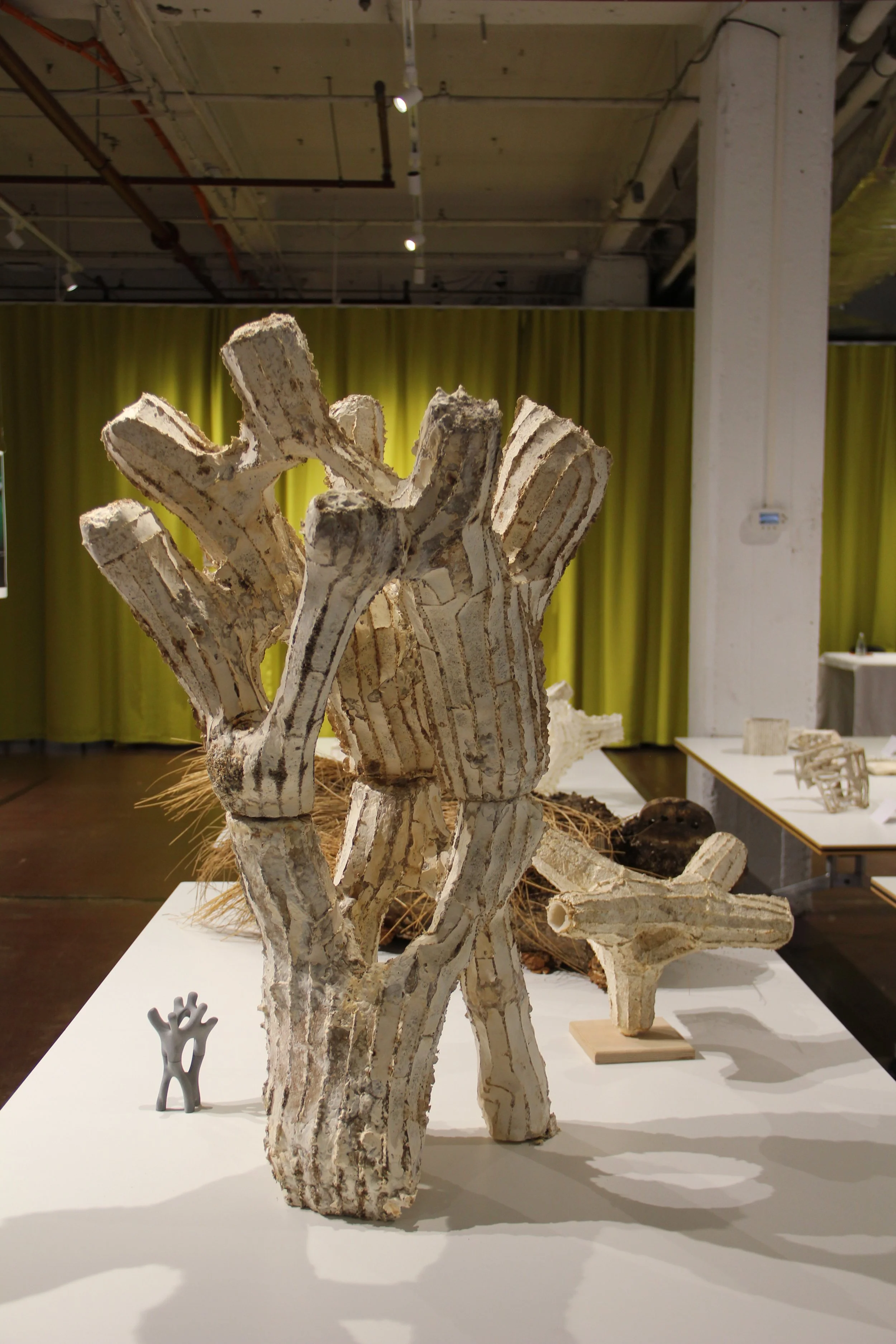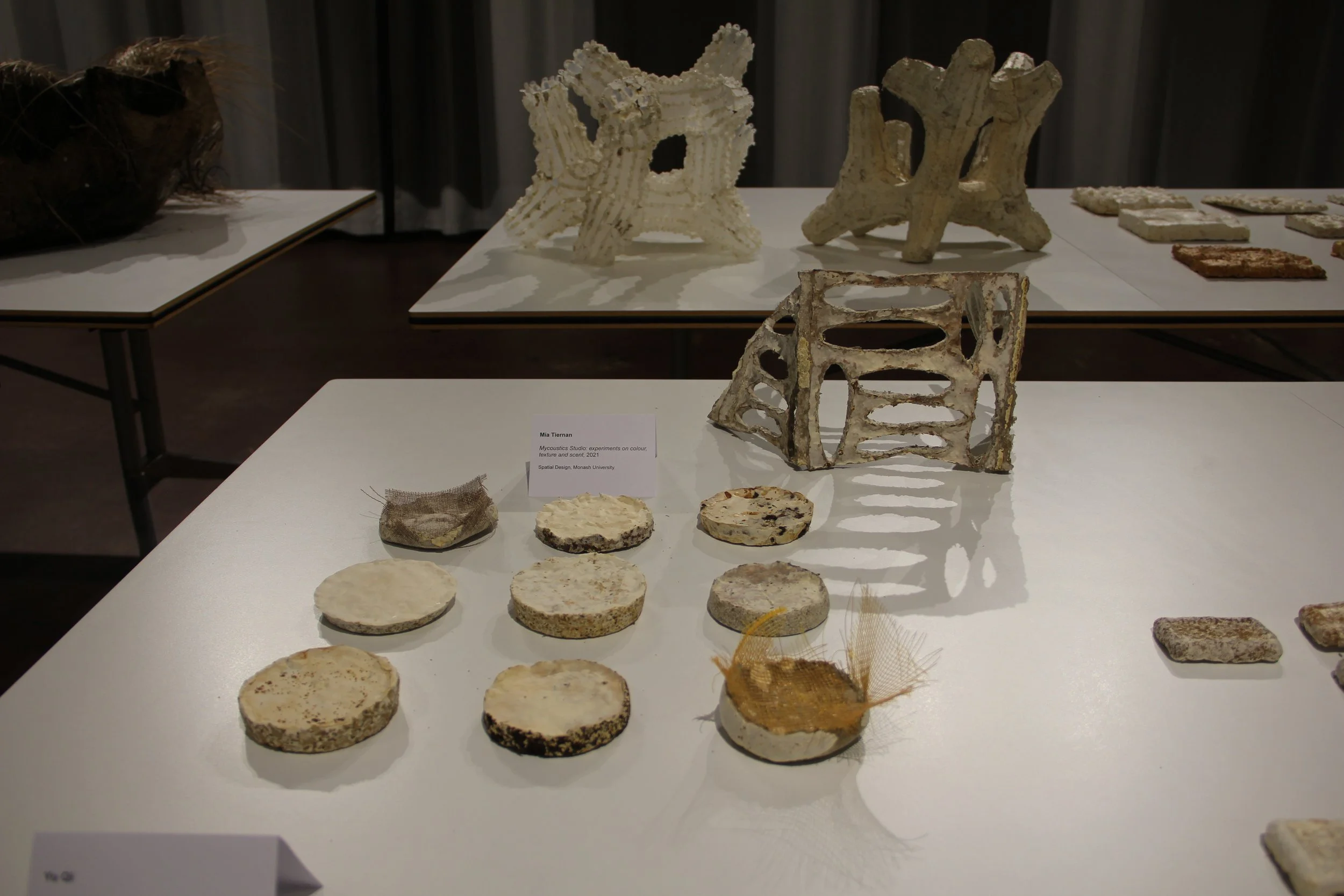Biodesign (mycelium)
What is Biodesign?
Put simply, biodesign is the collaboration and intersection between biology and design. This interface of biology and design is leading the path to new sustainable paradigms. Biodesign is about questioning and understanding humanity’s relationship with nonhumans, a curiosity of what the future may become. It is also about understanding what it means to be human and our ethical responsibilities when it comes to experimenting with biodesign.
Biodesign works on various scales from cells, to microbial, to multi-species interactions and with that scale shift comes an increase in ethical, environmental, and political responsibilities. There needs to be a balance between curiosity and critique, and desire to care for and maintain what remains.
A physical artefact or object has the power to make human beings feel one way or another. Each object or ‘technology’ can influence human perception, to then influence their role and further interactions or interventions. Biodesign uses this power to visualise concepts and conceptualise ways of living more sustainably. Biologist and artist, Elizabeth Henaff believes biodesign can develop instruments and interfaces that mediate this new understanding.1 A new understanding or feeling that is about developing an intuitive perception through careful observation alongside an empathy that grows with establishing a relationship.
Biodesign is also about relationships. Relationships related to the idea of social design set on a longer timescale. Historian, William Myers believes that biodesign is a practice that cultivates empathy across species and is fuelled by cross-disciplinary cooperation.2 If we use this method for improving the relationship within and between species collaboratively, and integrated, we can work towards socially and environmentally positive results.
1. Henaff, Elizabeth. “What Biodesign Means to Me.” Biodesigned: Issue 2, 16 July, 2020. Accessed August 3rd, 2021.
2. Myers, William. “What Biodesign Means to Me.” Biodesigned: Issue 6, 17 March, 2021. Accessed August 3rd, 2021.
Mycoustics
Mycelium Research
Melbourne Design Week
Mycelium Research
A series of images documenting the research, experimentation and analysis into the biomaterial, mycelium. Documentation of 3D printing using CNC moulds, vacuum forming and the process of growing mycelium.
Mycoustics explored the potential of mycelium as an innovative and sustainable biomaterial. The project developed acoustic panels that utilise the unique properties of mycelium, culminating in a scalable and efficient mass-production method.
Mycoustics
An exploration into mycelium as a biomaterial.
Mycelium is the root structure of a mushroom. It grows in soil or on substrates such as wood, straw and coffee granules. Here I have experimented with varying substrates from food waste to plastic mesh materials. It is a biodegradable and non-toxic material that can be used for insulation, sound absorption and fire-resistance. Through a cheap and fast-growing process the mycelium can be moulded into usable products such as packaging, furniture, lamps and acoustic panels. It can also be used to make a leather-like product. This biomaterial produces all this while sequestering carbon. Mycelium has a major part to play in our sustainable future.
Designing with living material
A short essay…
Biology is the most sophisticated design and it has proven over millions of years of evolution of refined adaptions to environmental conditions that nature can offer new perspectives and remarkable discoveries to our human and environmental issues.(1)
It seems almost too obvious to utilise and take advantage of materials that already exist in nature, despite the challenges associated with designing with living materials. The benefits of working with living materials, such as mycelium, are abundant and provide a closed-loop, circular system enabling the production of biodegradable materials. Designing with living material also allows us to interrogate humanity’s relationship with nonhumans.
Living materials requires the designers to work with the living material in the present moment rather than planning and designing in advance. This opens up possibilities that you may not have foreseen, which can take the project in an entirely new direction. Working with living materials is never the same experience as the growth takes on its own life.
The nature of working with living materials lends itself to be a very experimental process as you simultaneously observe and understand the material while designing with it. No matter the parameters you put in place to control the living material, once the growing stage begins, the process is dependent on the material growth.
Designing with living material is also a critique of being human and a way to renegotiate our place among the living and non-living.(2)
1 & 2. Myers, William. “What Biodesign Means to Me.” Biodesigned: Issue 6, 17 March, 2021. Accessed August 3rd, 2021.
Mycological Stories for Melbourne Design Week 2022 - a group show presented by Mia Tiernan, Cynthia Cheng, Canhui Chen, John Sader and Gyungju Chyon. Mycological Stories is an exhibition of images, material samples, tests, prototypes and models of experiments and speculations of mycelium objects and environments.
The subterranean portion of mushrooms, mycelium has played a central role in a paradigmatic shift happening in design, away from materials which are extracted towards materials that are grown. Design education is leading this shift, as exemplified in the exhibition work of students and academic staff in spatial design at Monash University, architecture at Swinburne University of Technology, and industrial design at Royal Melbourne Institute of Technology.
Work by Mia Tiernan & Cynthia Cheng
Mycological Stories presents a range of ideas, from the practical and purposeful to the poetic and playful, which probe the possibilities of this versatile biocomposite. Full-size prototypes of spatial dividers will sit alongside scale models of built environments, material samples and lab cultures. Some works explore the material composition and method of growth, while other works explore performance in relation to strength, smell, colour, texture and longevity. Still other works explore possible forms and applications. Large poster prints present outcomes of testing procedures, trial projects in situ, and speculations on possible futures.
Work by Canhui Chen
Work by Canhui Chen
Work by Gyungju Chyon
Work is my own unless stated otherwise.
Work by Cynthia Cheng
Work by Canhui Chen
